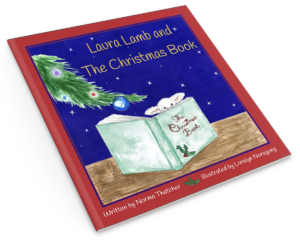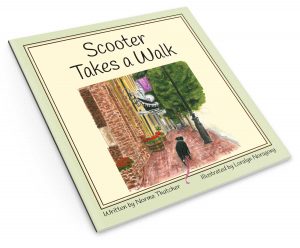
Be honest. How often do you read poetry? For a while, it seemed to me that poetry was on its way out. So I was happy when the 2020 winner of America’s Got Talent was Brandon Leake whose talent was identified as “spoken word poet.” And of course with Amanda Gorman’s stirring rendition of her original poem The Hill We Climb at this year’s inauguration, I think we can claim there is a resurgence in interest.
Way back in 12th grade English class, an assignment was to recite a poem, explain its meaning, and share what it meant to us personally. I chose a little-known poem called The House with Nobody in It from 1914. Recently one of my closest friends (who was with me in that long-ago English class) shared that since the day I presented it, that poem has remained her favorite.
The author is Joyce Kilmer who is most widely known for his 1913 short poem titled Trees. He and his wife and children were living in Mahwah, NJ, when he wrote much of his poetry. The first line of the House poem refers to a walk from Mahwah, NJ to Suffern, NY along the (now defunct) Erie Railroad track, a distance of about two miles.
Joyce Kilmer was a World War 1 hero, dying in 1918 of a sniper’s bullet and being presented with (posthumously) the Croix de Guerre, a French military decoration awarded for gallant action in war. He is buried in France.
The House with Nobody in It
Whenever I walk to Suffern along the Erie track
I go by a poor old farmhouse with its shingles broken and black.
I suppose I’ve passed it a hundred times, but I always stop for a minute
And look at the house, the tragic house, the house with nobody in it.
I never have seen a haunted house, but I hear there are such things;
That they hold the talk of spirits, their mirth and sorrowings.
I know this house isn’t haunted, and I wish it were, I do;
For it wouldn’t be so lonely if it had a ghost or two.
This house on the road to Suffern needs a dozen panes of glass,
And somebody ought to weed the walk and take a scythe to the grass.
It needs new paint and shingles, and the vines should be trimmed and tied;
But what it needs the most of all is some people living inside.
If I had a lot of money and all my debts were paid
I’d put a gang of men to work with brush and saw and spade.
I’d buy that place and fix it up the way it used to be
And I’d find some people who wanted a home and give it to them free.
Now, a new house standing empty, with staring window and door,
Looks idle, perhaps, and foolish, like a hat on its block in the store.
But there’s nothing mournful about it; it cannot be sad and lone
For the lack of something within it that it has never known.
But a house that has done what a house should do,
a house that has sheltered life,
That has put its loving wooden arms around a man and his wife,
A house that has echoed a baby’s laugh and held up his stumbling feet,
Is the saddest sight, when it’s left alone, that ever your eyes could meet.
So whenever I go to Suffern along the Erie track
I never go by the empty house without stopping and looking back,
Yet it hurts me to look at the crumbling roof and the shutters fallen apart,
For I can’t help thinking the poor old house is a house with a broken heart.
Kilmer bestows almost anthropomorphic attributes to the old house. It seems as if the battered place has human feelings and can recall memories of happier times.
When houses become homes, they are woven into our stories and our histories. So very much of our lives happens within our homes. Look at your family photos and you’ll see the following take place inside your walls: birthday celebrations, presents under the Christmas tree, family Thanksgiving dinners, getting ready for the first day of school, the prom, and graduation, coloring Easter eggs, baby’s first steps, and Grandma’s last visit.
Anyone who has left a beloved home to move somewhere else can tell you it’s a momentously sad occasion, regardless of how happy we may be about moving to a new home. I’ve done it twice and cried mightily both times.
I think the feelings, emotions, and memories connected to our home are why infirm or elderly people, even when they know they are not physically or mentally able to continue living in their home, are so opposed to leaving it. That’s likely why the concept of “aging in place” is so appealing to people my age. We just want to stay put, safely wrapped and held close by our homes’ walls.
~~~~~~~~~
Amanda Gorman at the 2021 Inauguration
2020 AGT winner Brandon Leake’s performances




Thank you! Yes, we decided to “age in place”. Thus refinancing our nearly paid for home to expand an inadequate kitchen we’ve lived with for nearly 28 years!
This way we can continue the memories going forward with our future generations and larger family Thanksgivings!
Well, you’ve got to email me photos of the renovation! Congratulations. I remember your talking about planning for it.